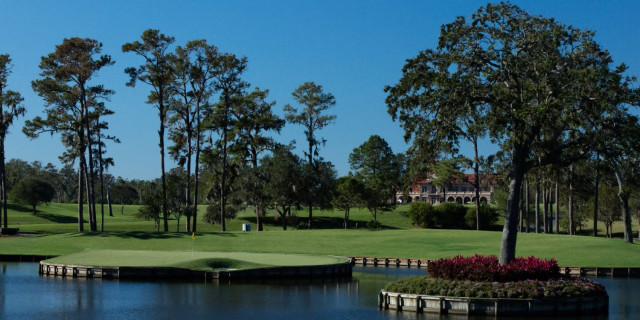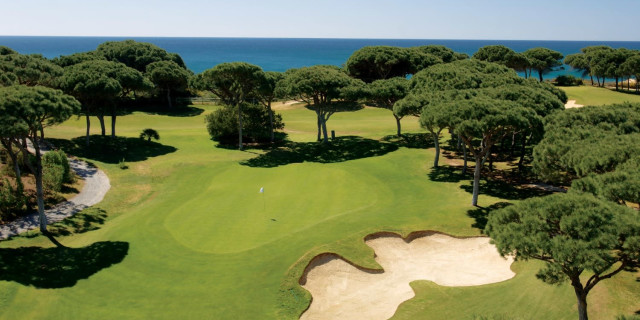Review: La Manga North and West
 Over the years, La Manga has become renowned as one of the best all-around golfing and sporting resorts in mainland Europe. It possesses three championship 18-hole golf courses, a distinguished ATP tennis academy, luxurious villas, swimming pools, top-quality restaurants and bars and a football complex regularly frequented by some of the world’s best teams. Located just 20 minutes from Murcia airport and an hour from Alicante, it sits on Spain’s southern sumptuous coast and just a few miles from the La Manga Strip – a 22km long and 100 metre wide spit abounding with restaurants, markets and thriving nightspots.
Over the years, La Manga has become renowned as one of the best all-around golfing and sporting resorts in mainland Europe. It possesses three championship 18-hole golf courses, a distinguished ATP tennis academy, luxurious villas, swimming pools, top-quality restaurants and bars and a football complex regularly frequented by some of the world’s best teams. Located just 20 minutes from Murcia airport and an hour from Alicante, it sits on Spain’s southern sumptuous coast and just a few miles from the La Manga Strip – a 22km long and 100 metre wide spit abounding with restaurants, markets and thriving nightspots.
Renowned quality
Such is the quality of La Manga resort that one of Spain’s most unique coastlines often gets overlooked. There is so much to see and do in the region of Murcia, but all the allures of the complex, coupled with more than 300 days of sunshine a year, translates to a large percentage who choose to stay on site. And with the golf on offer, it is hardly surprising. La Manga hosted the five Spanish Opens between 1973 and 1977, and legendary golfer Arnold Palmer remodelled the South Course in 1991. The South is generally considered to be the resort’s flagship course, but the West, which opened in 1996, and the North, which was renovated in 2001 (the same year La Manga was named ‘Europe’s Leading Golf Resort’ at the World Travel Awards) can both stake a legitimate claim to be labelled the best.
West Course
The West Course is one of the most beautiful, tranquil golf courses I have ever had the pleasure of playing. Make no mistake, it is treacherously difficult, but you can’t possibly be unhappy as you enjoy a post-round beer and a plate of tapas under the sun.
The first few holes present one of the most difficult starts to a golf course that I have encountered. The first only measures 350 yards, but out of bounds lines the right of the fairway and pond, some 100 yards in length, occupies the space between fairway and green. The par-3 2nd is similarly daunting, and there simply isn’t any bail our area. As you stand on the tee, all you can see is a 10-yard wide gap through which to aim. Some of the densest shrubbery one the course populates the valley between tee and green, with tall, thick pine trees running down both sides of the hole. Out of bounds also waits right, and the only safe area to miss is long and left.

The third hole also presents an array of obstacles. On the West Course, you can only safely hit driver on one of the five par-5s, and a barranca traversing the fairway at 210 yards means the long stick must stay in the bag. Only a good strike will find the fairway, and the second shot is one of the most challenging on the course. A long iron or fairway woods is required to clear a wide, deep ravine, but the shot should be hit from left to right on a diagonal angle over all the trouble. Hit it too straight and you’ll find trees; hang it out to the right and you’ll be dropping another ball.
The fourth offers some temporary respite, but the narrow, tree-lined nature of the course means if you aren’t hitting it straight, you could easily come in with less than 18 points. It may be tough, but it’s a real treat for the senses; exemplified by the closing hole. Standing on the tee on a clear day, you can see the La Manga strip, ‘Lion Rock’ and the olive groves that surround the resort. The fairway is 100 yards below the fairway and drives must carry 200 yards to clear a ravine. It is a stunning golf hole and the perfect end to a simply wonderful golf course.
The North
The North Course is perhaps the most scoreable of the three. Unlike the West, it is relatively open and there are many legitimate birdie chances. Course management is the key to scoring well around this track, because, even though the fairways are relatively large, water abounds and barrancas are tactfully placed over the 18 holes.
The first three holes on the North are relatively gentle, but the par-3 4th will make you stand up and take notice. A barranca crosses the hole on a left-to-right diagonal angle and runs past the right hand side of the green, catching anything pushed right. Out of bounds runs all the way down the left side of the hole, but rocky outcrops sometimes give a fortuitous ricochet back into play.

The best par 5 on the golf course is probably the 6th hole. The fairway is huge, and there isn’t much trouble off the tee, but it is all about positioning yourself for the third shot. The green sits about 50 yards above the level of the fairway and you can’t see the flag. If you’ve played the hole well nothing more than a wedge is required, but the last thing you want is a 170-yard shot over a barranca to an elevated green. The enormous putting surface is also split into two tiers, and with the semi-blind nature of the approach, finding the right section is more down to luck than judgement.
As with the West, the course’s crowning glory is, in my eyes anyway, the closing hole. Out of bounds runs down the left hand side of the fairway, and it takes length and precision to thread your drive between the hazard and a bunker on the right. An ideal drive leaves a mid-iron, over a barranca, to a three-tiered green that sits in the shadow of the majestic five-star Principe Felipe hotel.
The South
The South Course is of comparable quality and standing but different in character. Whilst there are some trees and elements of woodland, the course’s main defence comes in the form of large, quick and undulating greens and numerous water hazards.
Visit here for a detailed review of the South Course.
Related Content:

















